- Yuck. I can appreciate a top 10 list from afar, curious to know Joel Eddy or Mark Bigney’s take on their top releases of the year, but I will always struggle to craft my own. Not because the actual choosing of games is difficult but because the penning of lists is an activity akin to thumb-wrestling a needle. So here’s my list. 10 games which blew my mind. Hopefully you can take something unique away from these words in terms of perspective.
Yes, my top 10 is descending because this is the way. Whatever you do, maintain the suspense and don’t scroll to the bottom.
10. Dark Venture
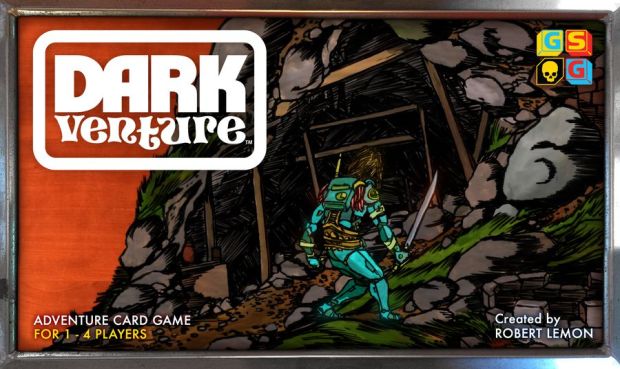
- “What the hell is this?” That was my response upon first discovering this game and then again upon playing it. I hope it’s yours seeing it on a top 10 list.
- Why it Matters – Dark Venture offers us something new. It blends competitive adventure game with bizarre narrative beats via small story books. It feels a little like a “Choose Your Own Adventure”, a little like Talisman, and a little like Dungeon Degenerates. Everything is pressed together with this absolutely oddball glue. This is one of the most successful blends of author prescribed and emergent narrative. Each location has a little story section but the way the whole unfolds is uniquely yours; one which is entirely unpredictable and foreign. The procedural generation of enemies, items, and quests lends to upheaval and large surprise. There’s not really a game like this one.
Why It’s Not Higher On This List – Wow is this one random. Combat is brutal and you can be knocked out in short order. If this occurs you will likely miss multiple rounds in a game that ends after 12. Also, it’s not at all concerned with fairness as dice matter more than stats or strategy. Them’s the breaks in the post-apocalyptic wasteland of mutation. Also, the game is likely to grow stale from a narrative perspective after a dozen plays or so due to seeing the same locations and the mystery fading quite a bit. On the plus side, the entire narrative baked into the locations can become completely fresh if the creator issues another electronic guide or two (the title comes with two such booklets).
9. Unmatched: Battle of Legends, Volume One
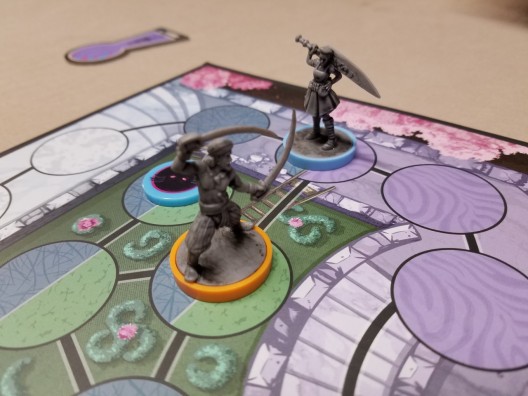
I wrote about this one at Ars Technica.
Why It Matters – A skirmish game is not new. A skirmish game based on Star Wars: Epic Duels is definitely not new. Yet Unmatched feels new.
This is because it successfully blends fighting game concepts seen in tabletop designs such as Yomi and Battlecon with the miniatures based format of Warhammer Underworlds and Wildlands. Players can quickly gain comfort with the pre-built asymmetric character decks giving way to noticeable depth early in your experience arc. The game continually gives back and feels rich for a 20 minute lark before the real gaming starts. It helps that the whole thing is beautiful as a sunrise and exudes a classical atmosphere. All of the work and focus put into this product results in a feel that is best described as timeless. This is a game we’ll be discussing 10 years from now.
Why It’s Not Higher – Occasionally this one feels predestined with your shuffle and hand playing you. I also can’t help but bag on the overstuffed feinting that undoes the most potent moments just a tad too often.
There is depth aplenty in this design but it doesn’t quite reach the heights of Warhammer Underworld’s exploration via endless tinkering. It also doesn’t boast the spectacle or drama encapsulated in my current favorite skirmisher – Mythic Battles: Pantheon.
8. Cthulhu: Death May Die
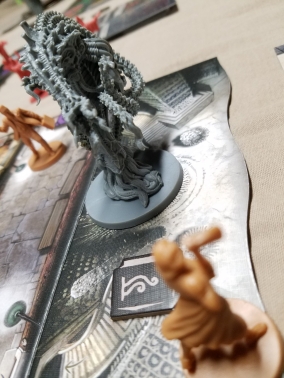
An Eric Lang and Rob Daviau collaboration that actually meets expectations? The end times are nigh.
Why It Matters – This is entirely about tempo. The pedal is held down with a brick and all you can do is swerve. With modular scenarios and ancient ones there’s this Street Masters vibe as content interacts in unique and interesting ways to craft on-the-fly scenarios.
I’ve already reached double digit plays with this one and it’s hard to put it down. It’s not quite a dungeon crawler, rather it’s more a tactical miniatures spin on something like Pandemic or Flash Point. You’re managing a buildup of monsters as the cultists bring the summoning of the Elder One ever near. And then everything is thrown into high gear as you give into sanity loss in order to beef up your skills.
That tight weave of mental destruction with growing power is a lever we’ve never seen, at least in this way. Yes, it was first introduced in Lang’s The Others, but that game did not utilize it to the fullest and married it to a slog of an experience that was entirely generic. This hits fast and hard and with full personality.
Why It’s Not Higher – This one is so fast at times that it can be borderline forgettable. The narrative is intense as it often comes down to a single last ditch attack, but the fact that this rolls out in much the same way each play causes the story beats to blend and fade. Absence the emotion of the feel-good insanity system, it would lose the compelling knot at the heart of the experience and become just another game.
7. Hellboy: The Board Game
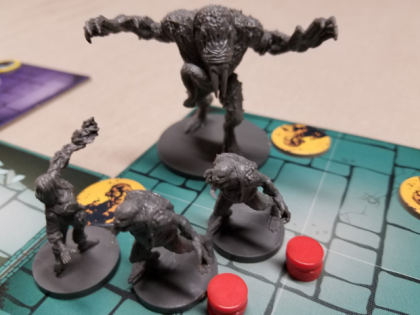
A game so interesting that it forced me to read the comic.
Why It Matters – James Hewitt and Sophie Williams strapped the dungeon crawl concept to the table and beat the hell out of it. The pulp that emerged is an extremely rich experience full of characters that are entirely asymmetrical, branching storylines that are full of surprises, and action that is intense and heroic. In many ways this feels like a tactical miniatures version of the Arkham Horror LCG as you progress through the story in similar fashion.
Likewise, there are many parallels between Hellboy and Death May Die, however they’re very different experiences when scrutinized. This is more deliberate and drawn out as the investigation culminates with unveiling the mystery and confronting the boss. Tempo undulates with moments of breakout crescendo and splashes of percussion. Then it slows, waiting as tension builds beneath the surface before it picks up again.
This is much more a proper dungeon crawler and it’s one of the best. It makes you feel powerful and unique and it offers you a very interesting story to tear apart.
Why It’s Not Higher – It’s probably not surprising to hear this one’s a slog to setup. You must build a unique event deck, find the appropriate enemies, gather the specific encounter cards, and then dig through dozens and dozens of miniatures to find the few you need. Part of this is the cost of content, but part of it is the very structure of the game. This adds up and it means I don’t play it as often as I should. It also scales somewhat poorly compared to its peers and functions best at 3-4 players.
6. Lifeform
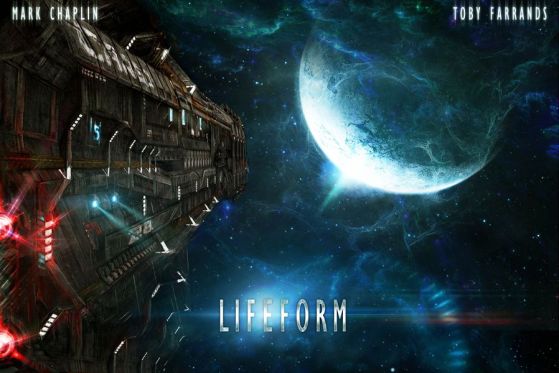
I backed Lifeform with a bundle of cash and a bundle of hope. This was one of my better decisions of 2018.
Why It Matters – The structure of this one is entirely unique. It’s not exactly a hidden movement game but it also kind of is. The Xenomorph is always nearby and you’re pressing, hoping to gather enough supplies to make it to the shuttle and off your dying ship. It’s more Alien than any official Alien game we’ve seen and it’s refreshing.
What’s really astounding about this game is the oppressive and tense atmosphere. You can’t actually harm the lifeform until the final encounter at the end of play – and you’re hoping you do well enough that this doesn’t even occur. Playing the crew is intense and some of the most deliciously stressful experiences I’ve ever had. Taking on the role of the alien is entirely different, you feel the pressure of the clock just as well as the crew members but you’re throwing your weight around and trying to outsmart your adversaries, executing clever bluffs and subtle misdirection. It’s visceral and it’s awesome.
Why It’s Not Higher – For better or for worse, the main bones of this story are scripted. There’s enough variation to result in unique outcomes, but the strategy encompassed within the design is very much the same game-to-game. The sheer terror of the lurking lifeform makes up for this, but it does stand in stark contrast to more open designs. This one also has a rulebook that’s unwieldy and as obnoxious as the amount of exceptions in the game. Fortunately those exceptions buy a rich enough experience to be worth the pain. I do, however, dread the day I come back to this one after letting it sit for a year and need to re-learn it.
5. Vast: The Mysterious Manor
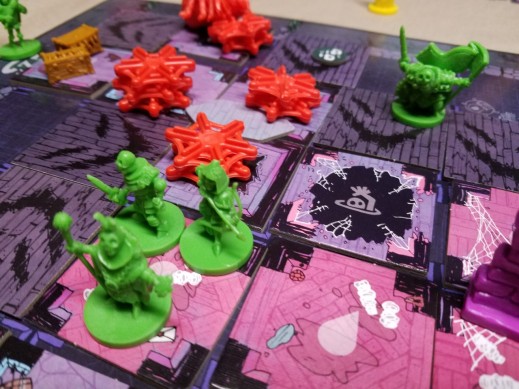
I wrote a pretty gung-ho piece on this one earlier in the year.
Why It Matters – This release is really a reflection on Leder Games’ accomplishments and their current position as an indie powerhouse. I wasn’t smitten with the first iteration of Vast, but that first release was absolutely necessary for the floodgates of asymmetry to open. Without Crystal Caverns we likely don’t get Root and we certainly don’t get Mysterious Manor.
This is one of the most successful designs in producing disparate parts that interlock in mechanically simple yet strategically complex ways. It also shows how far we’ve come in hybridizing Euro-style resource management with Ameritrash drama and conflict. This one’s an achievement, it’s just a fact.
Why It’s Not Higher – Simple is relative, and outside the scope of these types of designs this one can actually be difficult to internalize. It’s much easier to teach than Crystal Caverns and the graphic design has been wildly enhanced to convey information more naturally, but it’s still a heavier game that takes effort to commit. The rulebook is also not always agreeable in helping to smooth the experience and this can be discouraging in your early days.
4. Nemesis
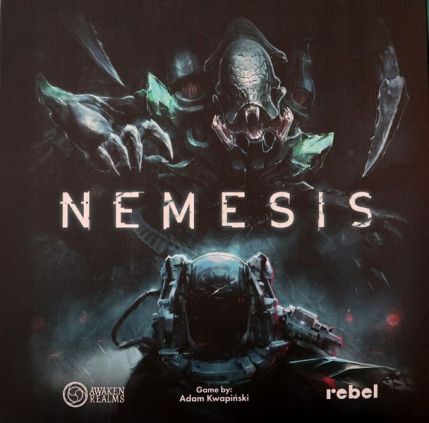
One story generator to rule them all.
Why It Matters – You have to view Nemesis as an overcomplicated framework to generate narrative. It provides the moving pieces and tools for players to latch onto, gives you a push in a general direction, and then starts blowing everything the hell up. How your story and decisions collide with another’s is the real brilliance of this thing. You will fight over punching in the ship’s coordinates, seal each other in rooms and hope your adversary dies of fire or claw, sometimes you will sabotage the engines before flying off in an escape pod. Each session is its own isolated 20th Century Fox slice of cinema, and its fantastic. The way it bounces between conflict and cooperation and rides these fragile relationships into a brilliant supernova is worth standing up for.
Why It’s Not Higher – It’s too long. At three hours it could benefit by shaving 30 or 60 minutes off. It’s also dull at less than four players, which means you will always run into that former problem with the longest format.
The ever present randomness also borders on unhealthy at times. When you draw two events that spread fire and the entire ship explodes you can’t help but laugh to avoid crying. A game that takes 15 minutes to setup should never end 20 minutes later.
3. Tainted Grail: The Fall of Avalon
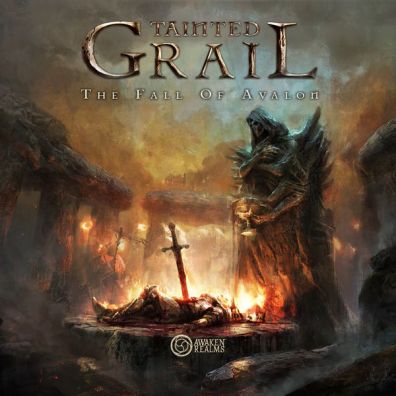
Story like you read about.
Why It Matters – This is the best scripted narrative game I’ve ever seen. It’s enthralling, offering seemingly dozens and dozens of story paths to explore while rewarding and punishing you for your decisions. There are legitimate consequences and stakes and it’s wonderful. Despite the fact that everything here has been penned by an outside author, it feels as though you legitimately shape the world and carve your own identity out of this flawless statue.
This game is everything I wanted 7th Continent to be. Each card is a location you can spend a day in. Each battle is a fierce puzzle to outwit. Each encounter is a dreadful horror waiting to be discovered.
Why It’s Not Higher – When I finished the campaign after 18 hours or so of play, I was a bit exhausted. The game fails to avoid the 7th Continent’s naked resource grind, requiring you to constantly work to light the Menhir statues littered across the island. It can become annoying, particularly when you’ve spent a great deal of time and effort to travel far in one cardinal direction only to discover you need to now backtrack all the way to the beginning.
The juicy story bits make the pain worthwhile, but I have to admit that I shamelessly skipped the grind at times and was happier for it. If a game encourages you to cheat and skip ahead, winging the cost in resources to maintain balance, it fails on some fundamental level. The fact that I’ve still positioned this game as my number three release for the year is testament to its powerful story.
It also only really excels as a solo endeavor. This is due to a lengthy encounter system and having to watch other players fight – physically or verbally – for upwards of five minutes while you twiddle your thumbs. Passing the book around and reading narrative aloud also struggles to excite. The unfortunate aspect of this being relegated to solitaire play is that you will have no one to high-five when the best moments land, no one to clobber when anguish and pain arise.
2. Core Space
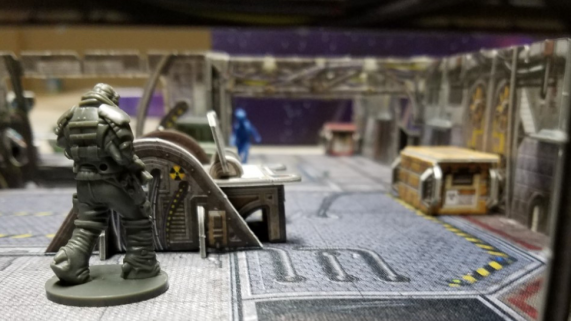
My heart is molded in plastic.
Why It Matters – Core Space is exceptional. It presents a compelling narrative sandbox that allows freedom of exploration and interaction. You can befriend other player’s crews or fight them for the current objective. The game-driven enemy exists in security and outlaw forces, as well as a huge mechanical alien menace. There are elements of Firefly, The Expanse, and Shadowrun. The tempo is fierce and there’s always one more job just around the corner.
As an experience this recalls my favorite game ever crafted, Earth Reborn. There’s a freedom of environment here that many games never successfully capture. This produces the most enticing of interactions as player’s motivations twist and intermingle in nefarious ways.
I haven’t even gotten to the board yet.
The playing surface is a neoprene mat about 2 feet square, with three dimensional cardstock walls and doorways forming a maze of a battleground. There are props like crates you actually open up to search for weapon tokens, signage you can plaster over the many walls to enhance personality and setting, even windows you can dive through. It’s engrossing and threatens to become my lifestyle game of choice.
Why It’s Not Higher – Man does this one take a long time to setup. We’re talking 20-30 minutes of linking together the 3D walls and positioning everything just right. Then you play this intense firecracker of a mission that lasts about 60 minutes, which is perfectly paced. If you want to now play again you need to reassemble a new map and it’s inconvenient in ways gaming shouldn’t be. Thus, like Earth Reborn, this is one I’m not playing nearly as much as I ought to.
It also can get a bit samey. This is a byproduct of the current mission design as opposed to the ruleset. The framework is there to create really unique and interesting setups, but it appears as though that torch is left mostly for the community to carry at this point.
1. Pax Pamir 2nd Edition

It’s almost perfect. If you want more words on this one, check out my review.
Why It Matters – This is Phil Eklund’s beloved Pax system perfected. It’s just accessible enough to get everyone off and running, yet it’s swollen with depth and nuance. The experience feels simultaneously open and constricted as you’re constantly flipping between waging war and offering platitudes to your opponents. It has negotiation, conflict, and tension all bundled up in this absolutely fantastic design space.
The real success here is in offering a game that is political leaning in a really open and player-friendly format that also manages to play quickly. There’s little downtime and it never overstays its welcome.
Don’t have the daylight for Dune or Twilight Imperium? There’s Pax Pamir.
Don’t have the energy for a learning game of Pax Porfiriana? Pamir is here.
Like Root and John Company before it, Cole Wehrle has brought us a design that is grand and historic in a way that this medium can’t often capture. It teaches us about the past while having us looking toward the future and reflecting upon human nature.
This is an experience that digs into your brain and begins to carve out a home. It simply won’t let go and I love it for that.
If you enjoy what I’m doing at Player Elimination and want to support my efforts, please consider dropping off a tip at my Ko-Fi.

Reading your description of Core Space has me thinking, “This sounds as open as Earth Reborn (one of my very top favorites, that I happened to play today!).” And then there it is – you reference ER. I saw Pax Pamir 2ed on my shelf and considered learning how to play tonight. And then there it is – next on the list.
2019 – The year of coincidences that won’t interest any of my coworkers.
LikeLiked by 1 person
The fact that you were able to get Earth Reborn played is an achievement in and of itself.
LikeLike
Nice list – a lot of games I have only seen from a distance, and another push towards Pax Pamir for me!
LikeLike
If you end up checking any of them out, I hope you have a good time! Thanks for reading.
LikeLike